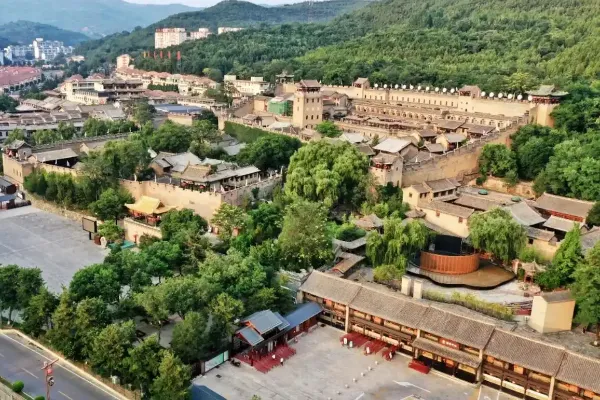
Located in Beiliu Town, Yangcheng County, Jincheng City, Shanxi Province, Huangcheng Xiangfu (Royal Prime Minister's Residence) was the former residence of Chen Tingjing, Grand Secretary of Wenyuan Pavilion and Minister of Personnel during Emperor Kangxi's reign in Qing Dynasty. Hailed as "The First Cultural Magnate Residence in Northern China", it is now a national 5A-level tourist attraction.
Overview
Basic Information
- Construction Period: Initially built in 1632 (5th year of Chongzhen reign, Ming Dynasty), expanded during Kangxi period of Qing Dynasty.
- Architectural Scale: Total area of 36,000 sqm, consisting of inner and outer cities with 16 courtyards and 640 rooms.
- Historical Status: Rated as national 5A-level scenic area in 2007, included in China's World Cultural Heritage Tentative List in 2011.
Cultural Value
- Architectural Art: Combines official Ming-Qing architecture with Shanxi residential features.
- Family Culture: The Chen family produced 41 senior licentiates, 19 provincial graduates, 9 palace graduates and 6 Hanlin academicians during Ming and Qing dynasties.
- Historical Testimony: Preserves intact the architectural norms and living scenes of official mansions from Ming-Qing period.
Architectural Features
Layout
- Dual-City Structure: Inner city built in Ming Dynasty, outer city expanded in Qing Dynasty, forming "city within city" pattern.
- Defense System: 12m-high city walls with watchtowers, troop-hiding caves and other military facilities.
- Axial Symmetry: Strictly follows traditional Chinese architectural symmetry principles.
Representative Buildings
- Heshan Tower: 30m-high, 7-story defensive structure, tallest civilian building of Ming-Qing period.
- Zhongzai Mansion: Main residence of Chen Tingjing, typical mansion for top-ranking Qing officials.
- Imperial Calligraphy Tower: Houses imperial writings bestowed by Emperor Kangxi to Chen Tingjing.
- Wenchang Pavilion: Study place for family descendants, reflecting emphasis on education.
Main Attractions
Core Areas
- Inner City: Mainly Ming architecture including Heshan Tower and troop-hiding caves.
- Outer City: Qing expansion area concentrating main buildings like Zhongzai Mansion.
- Garden Area: South Academy and Zhi Garden showcasing literati aesthetics.
Cultural Exhibitions
- Chen Tingjing Memorial: Displays life and achievements of the renowned prime minister.
- Ming-Qing Furniture Exhibition: Showcases precious furniture from Ming-Qing period.
- Imperial Examination Culture Exhibition: Introduces China's ancient examination system and Chen family's scholarly achievements.
Featured Experiences
Cultural Activities
- City Gate Opening Ceremony: Daily morning ancient-style welcoming ritual.
- Imperial Exam Experience: Visitors can participate in simulated imperial examinations.
- Traditional Wedding Performance: Demonstrates wedding customs of Ming-Qing official families.
Folk Experiences
- Shanxi Noodle Making: Hands-on experience of local noodle preparation.
- Traditional Craft Demonstrations: Displays of intangible cultural heritage like paper-cutting and fabric art.
- Costume Photography: Ming-Qing costume rentals and ancient architecture photo services.
Practical Information
Opening Hours
- Peak Season (Apr 1-Oct 31): 08:00-18:30
- Off Season (Nov 1-Mar 31): 08:30-17:30
Ticket Information
- Full Ticket: 120 RMB/person
- Concession Ticket: 60 RMB/person (students, seniors etc.)
- Guiding Service: 100 RMB/tour (Chinese, max 10 people)
Transportation
- Public Transport: Tourist shuttle buses from Jincheng East Bus Station.
- Self-drive: From Jincheng via Jinyang Expressway, exit at Beiliu and follow signs for 10km.
- Parking: Large parking lot available for 500 vehicles.
Travel Tips
- Best Season: Spring and autumn with pleasant weather, avoid extreme temperatures.
- Suggested Duration: Allow 3-4 hours for in-depth visit.
- Notice: Some ancient buildings have high steps - elderly and children should take caution.